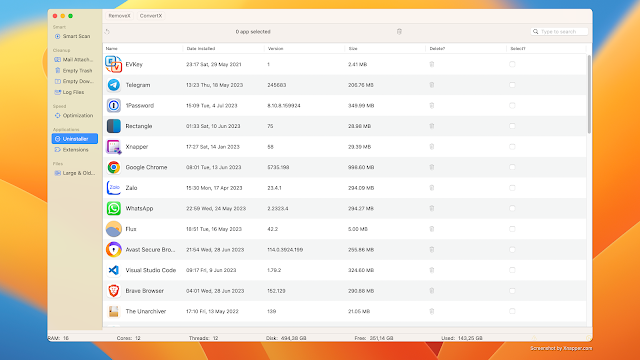TOGAF: A Framework for Successful Business Transformation
 |
| Source: Free Image |
TOGAF (The Open Group Architecture Framework) is an enterprise architecture methodology that offers a systematic approach to business transformation and software development. It provides a high-level framework to help organizations define their business goals and align them with architecture objectives. By following TOGAF, businesses can streamline their development processes, reduce errors, stay on budget, and achieve alignment between IT and business units. In this article, we will explore the significance of TOGAF and how it can contribute to successful business transformation.
Understanding the TOGAF Framework
TOGAF was developed by The Open Group in 1995 and has been widely adopted by global companies, including 80% of the Global 50 and 60% of the Fortune 500. This recommended framework provides a comprehensive set of tools, guidelines, and best practices to support enterprise architecture development. While businesses are not required to implement TOGAF in its entirety, they can selectively adopt and adapt the parts that are most relevant to their needs.
The TOGAF framework has a modular structure, making it easier to implement and customize for specific industries and organizations. It consists of two main components: the fundamental content and the extended guidance. The fundamental content includes essential elements and best practices that form the foundation of TOGAF, while the extended guidance provides specific advice for various topics such as agile methods, business architecture, data and information architecture, and security architecture.
The Benefits of TOGAF in Business Transformation
Implementing TOGAF can bring several benefits to organizations undergoing business transformation:
1. Alignment of IT and Business Goals
TOGAF excels at aligning IT goals with overall business objectives. By following the framework, organizations can ensure that their IT initiatives directly contribute to the success of the business. TOGAF provides a common language and framework that bridges the gap between IT and the business side, facilitating effective communication and collaboration.
2. Streamlined Development Processes
TOGAF helps organizations streamline their software development processes by providing a systematic approach to enterprise architecture. It offers a set of guidelines and best practices that can be followed throughout the development lifecycle, from requirements gathering to implementation and maintenance. This systematic approach reduces errors, improves efficiency, and ensures that projects stay on track and within budget.
3. Collaboration Among Stakeholders
Successful business transformation requires collaboration among multiple departments and business units. TOGAF helps facilitate this collaboration by providing a common framework and language that all stakeholders can understand. It brings clarity to the development process, ensuring that everyone is on the same page and working towards the same goals.
4. Governance and Risk Management
TOGAF emphasizes the importance of governance and risk management in enterprise architecture. It provides guidelines for establishing governance structures and processes to ensure that projects are executed according to best practices and compliance requirements. This focus on governance helps organizations manage risks effectively and make informed decisions throughout the transformation process.
5. Scalability and Flexibility
TOGAF is designed to be a modular and scalable framework, enabling organizations to adapt it to their specific needs. It allows businesses to start with the core fundamentals and gradually incorporate additional elements from the extended guidance as required. This flexibility ensures that organizations can tailor TOGAF to their unique circumstances and continuously evolve their architecture practices.
Implementing TOGAF in Practice
While TOGAF provides a comprehensive framework, organizations can choose to adopt and adapt the parts that are most relevant to their specific transformation journey. Here are some practical steps to implement TOGAF effectively:
1. Define Your Architecture Framework
The preliminary phase of TOGAF implementation involves defining your own version of the framework and deciding how you will apply it within your organization. This phase is an opportunity to organize workshops with stakeholders to align their understanding and expectations before the project begins.
2. Follow the Architecture Development Model (ADM)
The Architecture Development Model (ADM) is a pre-built roadmap provided by TOGAF to guide organizations through each phase of the transformation process. It consists of nine interdependent phases, including architecture vision, business architecture, information systems architecture, technology architecture, opportunities and solutions, migration planning, implementation governance, and architecture change management. By following the ADM, organizations can ensure a structured and systematic approach to their transformation initiatives.
3. Adapt TOGAF to Fit Your Needs
TOGAF is a flexible framework that can be adapted to fit the unique needs of your organization. While you should strive to follow best practices, you can customize the depth and extent of each phase based on your company's resources and architecture teams. Focus on the most important areas of change and scope, and deliver tangible value to your stakeholders throughout the transformation journey.
4. Utilize Existing Best Practices and Governance
To reduce complexity, leverage your organization's existing best practices and governance processes within the respective phases of TOGAF. This will help ensure that your implementation aligns with your existing frameworks and minimizes disruption. Additionally, use enterprise architecture best practices to define your future state architecture at a conceptual level, then work on the relevant details in each phase to bridge the gap between the current and future states.
5. Keep Documentation and Deliverables Essential
TOGAF is an evolving framework, and it is important to keep documentation and deliverables manageable and focused on the essentials. Start with the "must-have" artifacts and deliverables for each phase and use a slimmer version for other necessary but less critical artifacts. This approach allows you to maintain agility while still capturing the necessary information and decisions.
Conclusion
TOGAF is an invaluable framework for organizations embarking on business transformation initiatives. By aligning IT and business goals, streamlining development processes, promoting collaboration, and ensuring governance and risk management, TOGAF provides a structured and systematic approach to enterprise architecture. By implementing TOGAF effectively and customizing it to fit their needs, organizations can drive successful business transformation and achieve their strategic objectives.
Follow more at: https://medium.com/@LocNguyenHuu



Comments
Post a Comment